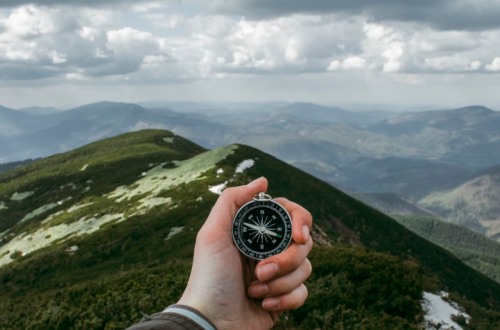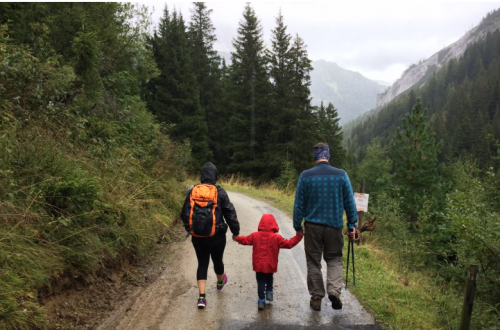
Trekking Through Jungles: Mysteries of the Rainforest
Introduction: The Enchantment of Rainforest Treks
Imagine yourself navigating through dense, green foliage, the air thick with humidity, the ground beneath your boots teeming with life. Rainforests, often referred to as the lungs of the Earth, offer an experience that’s as thrilling as it is humbling. Trekking through jungles is an adventure unlike any other. It’s a chance to connect with nature on a deeper level, uncover hidden secrets of the natural world, and truly appreciate the complexity of ecosystems that thrive in some of the planet’s most untouched corners.
In this article, we’ll explore what makes rainforest trekking such a unique experience, how to prepare for it, and why it’s so important to the broader understanding of our world. Whether you’re an experienced trekker or a first-time adventurer, there’s something truly magical about wandering through the wild heart of a rainforest.
What Makes Rainforests Unique?

Rainforests are one of Earth’s most vital ecosystems, covering only about 2% of the planet’s surface but hosting over half of the world’s plant and animal species. These dense, tropical jungles are often seen as mysterious and daunting, with their rich biodiversity and the feeling of venturing into the unknown.
The Ecological Importance of Rainforests
Rainforests play a crucial role in regulating the Earth’s climate. They absorb vast amounts of carbon dioxide and release oxygen, helping to mitigate climate change. The Amazon Rainforest alone is often called the “planet’s lungs” due to its immense role in carbon sequestration. Furthermore, these forests influence rainfall patterns, contributing to water cycles and weather stability across regions.
Rainforest Biodiversity: A World of Wonders
The biodiversity within a rainforest is mind-boggling. Each tree, vine, and insect plays a part in the web of life, often in ways that we are just beginning to understand. Researchers continue to discover new species in these ecosystems, highlighting their critical role in global biodiversity. The dense foliage, towering trees, and multi-layered canopies create a labyrinth of life where every step offers new sights and sounds.
Choosing the Right Jungle Trekking Destination
Not all jungles are created equal, and choosing the right destination for your trekking adventure can make a huge difference in your experience. Some rainforests are more accessible than others, while some require intense preparation due to their remote locations.
Popular Rainforest Trekking Locations Worldwide
Some of the most iconic rainforest trekking locations include:
- The Amazon Rainforest (South America): Known for its vastness, this rainforest offers incredible biodiversity and challenges for seasoned trekkers.
- Borneo Rainforest (Malaysia/Indonesia): A blend of exotic wildlife and cultural encounters, Borneo’s rainforests are home to orangutans and other endangered species.
- Costa Rican Rainforests: Famous for their lush landscapes and rich biodiversity, these forests are easily accessible and often visited by first-time trekkers.
Factors to Consider When Picking a Trek
When choosing a destination, consider factors like the difficulty of the terrain, the climate, the season, and the level of experience required. Some treks may involve long days in sweltering heat, while others may require you to navigate slippery slopes and dense undergrowth. Always take into account your physical fitness and experience level when selecting a trek.
Preparing for Your Jungle Adventure

Jungle trekking requires more than just a sense of adventure. Proper preparation is key to having a safe and enjoyable experience.
Physical Preparation: Building Endurance
Jungle treks can be physically demanding, involving long hours of walking in high humidity, often in rugged or uneven terrain. Building endurance through cardio workouts, strength training, and practice hikes in similar conditions is essential. Trekking poles can also be useful for stability on steep paths.
Essential Gear for a Successful Trek
The right gear can make or break a jungle trek. Essential items include:
- Sturdy hiking boots: For gripping muddy, slippery paths.
- Lightweight, moisture-wicking clothing: To stay cool and avoid chafing.
- Insect repellent and protective clothing: To ward off mosquitoes and other biting insects.
- Rain poncho or waterproof gear: The rainforest is known for sudden rain showers, so staying dry is essential.
- A high-quality map or GPS device: Jungle trails can be hard to follow, so navigation tools are a must.
The Challenges and Risks of Jungle Trekking
Jungle treks come with inherent risks that require both preparation and caution.
Navigating through Dense Vegetation
The thick undergrowth and towering trees can make it difficult to stay on the trail. Often, paths are faint, and it’s easy to lose your way. Having a guide or a good sense of direction is essential to avoid getting lost in the jungle’s labyrinthine paths.
Dealing with Wildlife and Insects
Rainforests are home to a variety of wildlife, from harmless creatures to potentially dangerous ones. While encounters with large predators are rare, smaller animals such as snakes, spiders, and insects can pose risks. Always stay alert and follow safety precautions to avoid these hazards.
What You Can Learn from Jungle Trekking

A jungle trek isn’t just about physical endurance; it’s an opportunity to expand your knowledge and understanding of the natural world.
Understanding the Ecosystem
By immersing yourself in a rainforest environment, you’ll gain a deeper understanding of the delicate balance of ecosystems. Every plant and animal in the jungle plays a role, and trekking through these forests gives you a firsthand look at how interconnected life really is.
The Role of Indigenous Knowledge in Trekking
Many rainforest treks are guided by indigenous communities who have lived in these environments for generations. These guides bring invaluable knowledge of the jungle’s plants, animals, and survival techniques. Trekking alongside them can give you insights into the sustainable practices that have allowed them to thrive in these environments for centuries.
Conclusion: Embracing the Mysteries of the Rainforest
Trekking through jungles is an unforgettable journey into one of the world’s most mysterious and vital ecosystems. It’s a chance to challenge yourself physically, learn about the wonders of nature, and experience the rainforest in a way few ever will. The journey may be challenging, but the rewards—both in terms of knowledge and personal growth—are immense. Whether you’re exploring the Amazon, trekking through Borneo, or venturing into the rainforests of Costa Rica, each step offers a unique adventure waiting to unfold.
FAQs
1. What should I pack for a jungle trek?
You should pack lightweight clothing, sturdy hiking boots, insect repellent, a rain poncho, a good map or GPS, and a first aid kit. Don’t forget a refillable water bottle!
2. Are jungle treks dangerous?
While jungle treks come with inherent risks such as wildlife encounters and unpredictable weather, proper preparation and experienced guides can help minimize dangers.
3. How long does a typical jungle trek last?
Most jungle treks last anywhere from a few days to several weeks, depending on the location and the difficulty of the trail.
4. What is the best time to go trekking in a rainforest?
The best time is usually during the dry season, which varies depending on the location. Be sure to research the climate of your chosen destination before booking.
5. Can I go on a jungle trek if I’m a beginner?
Yes, many rainforests have treks suitable for beginners, especially in more accessible areas like Costa Rica. However, it’s important to choose a trek that matches your fitness level and experience.




